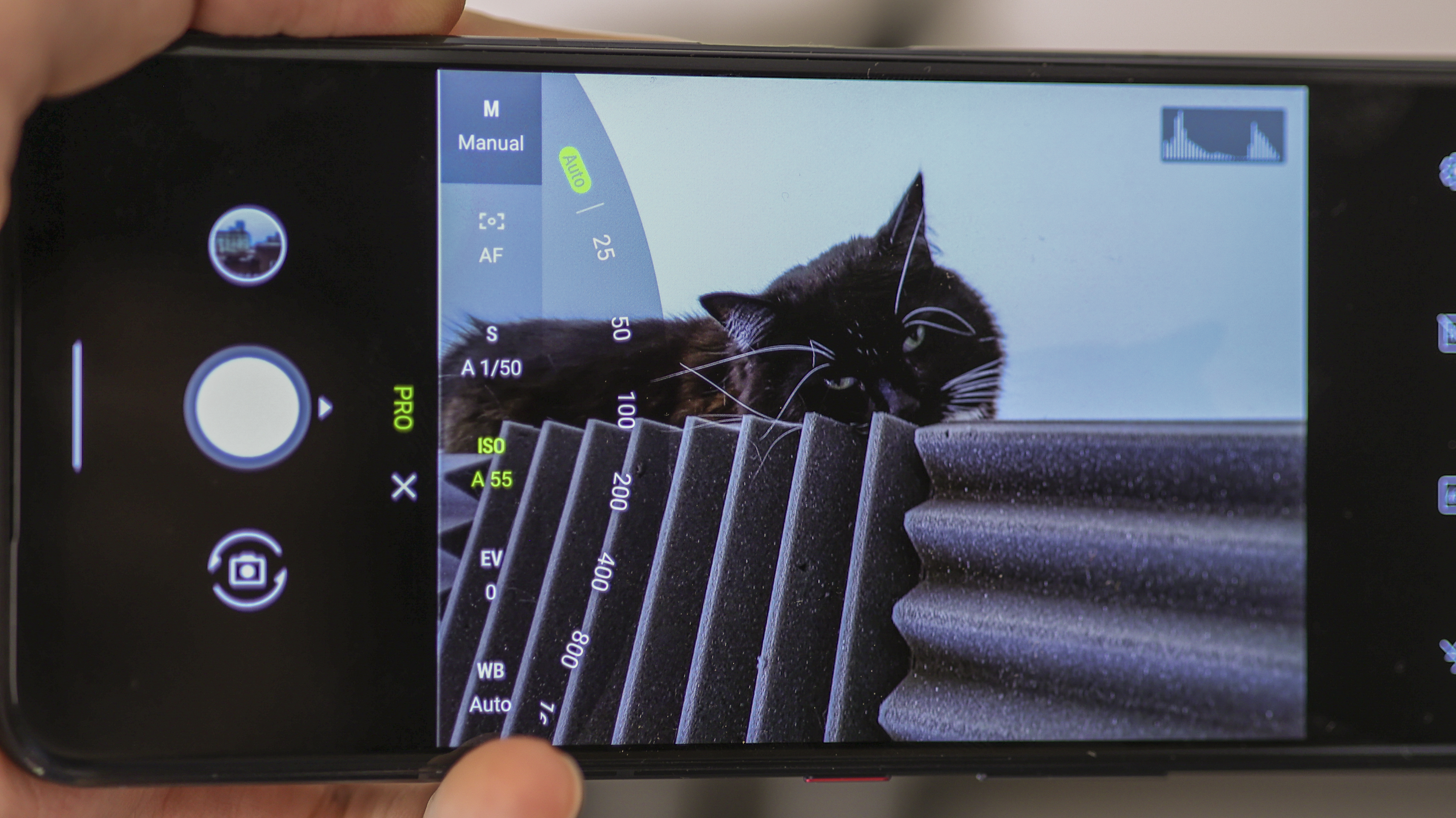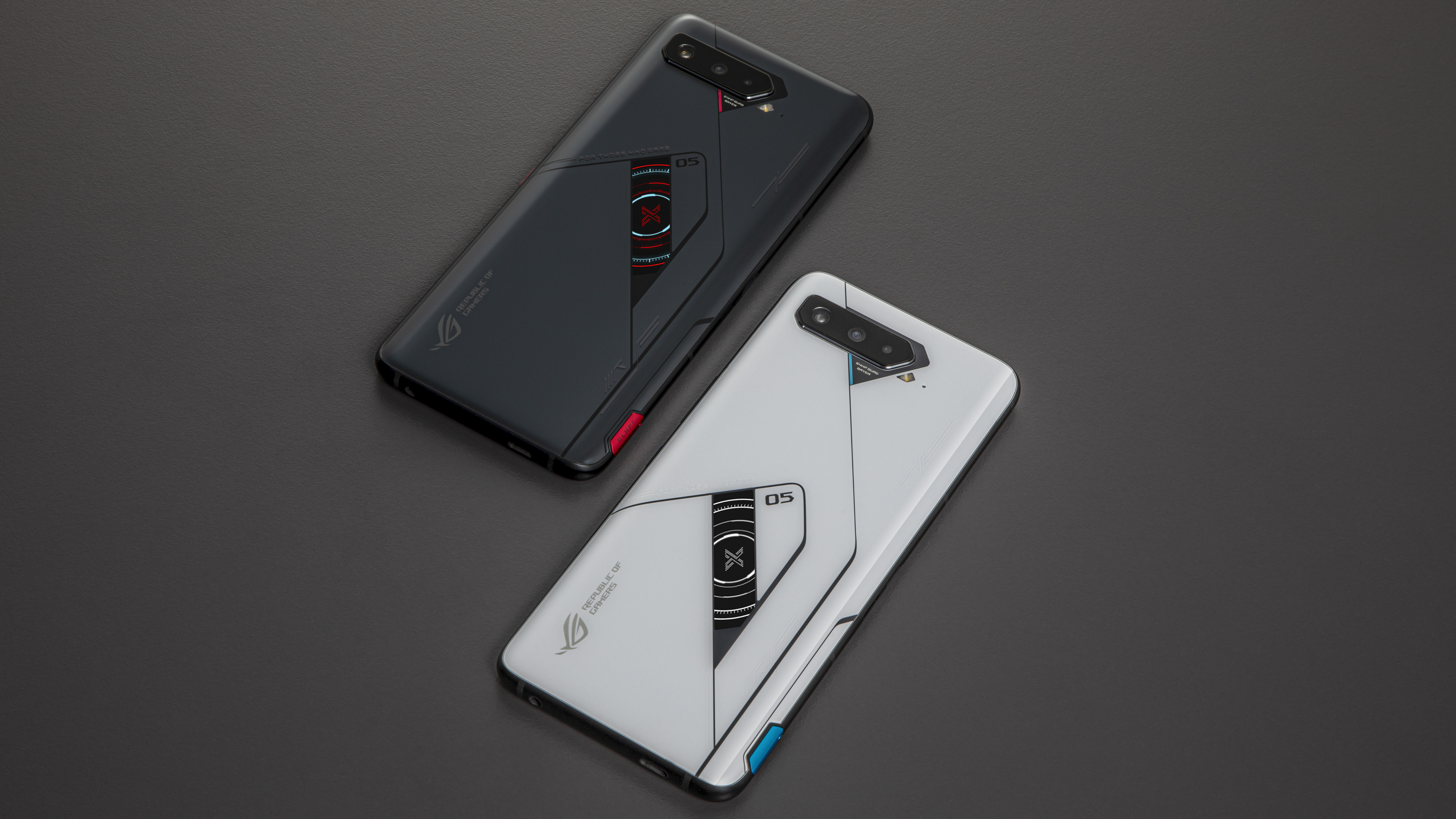Digital Camera World Verdict
The Asus ROG Phone 5 falls behind most of the £799 (approx. $950) competition when it comes to photography. Despite this, it’s still the best gaming phone around, and its camera isn’t bad. Between its amped-up power, gaming accessories, screen specs, sound and interface, Asus hasn’t just created a phone for gamers, it’s created an experience that makes the ROG Phone 5 an easy recommendation for anyone who’s gaming first, photography second (or third).
Pros
- +
Beautiful, high refresh rate display
- +
Smart camera software
- +
Fantastically tuned for gamers
Cons
- -
No OIS or telephoto camera
- -
No IP68 water or dust resistance
- -
Screen is Full HD, not Quad HD
Why you can trust Digital Camera World
The Asus ROG Phone 5 wants to be the ultimate gaming phone, and after a week of swiping, strafing, slashing, shooting, and bashing furiously at its screen, we can confirm it is. That said, is it the ultimate camera phone? The competition for that title’s significantly tougher.
There are gaming phones and there are Asus ROG Phones, with the key difference being ROG Phones tend to pack more polish and better cameras than the likes of BlackSharks, Lenovo Legion Phones, and Nubia Red Magics.
Asus skipped the ROG Phone 4, owing to the number four being inauspicious in China and Taiwan. Its predecessor, the ROG Phone 3 which launched in July 2020 also saw a limited global release. In turn, most people in the UK and US won’t have had their ROG fill since the impressive ROG Phone 2.
Now, the 5G-enabled ROG Phone 5 is launching globally with a larger 6.78-inch 144Hz AMOLED display, a Qualcomm Snapdragon 888 chipset, a giant 6000mAh battery as well as either 128GB, 256GB, or 512GB storage depending on the version you opt for. It’s also the first phone to ship with up to 18GB RAM, and its interface is loaded up with gamer-focused flourishes.
With the same camera setup found on last year’s ROG Phone 3, is the ROG Phone 5 yet another great gaming phone with a bad camera, or does it break the mold and deliver a royal flush with across-the-board greatness?
Design and screen
There’s nothing small about the Asus ROG Phone 5. Combining a 6.78-inch screen with 10.29mm depth, and clocking in at almost 8cm tall, it’s a slab. It’s also a gaming phone, which means RGB lighting, sci-fi styling, and gamer-focused flourishes.
Available in three versions, Rog Phone 5, Rog Phone 5 Pro, and ROG Phone 5 Ultimate, the standard version sports an RGB ROG logo around the back, while the Pro and Ultimate featuring a ROG Vision second display for a greater degree of back-light customization. They also sport a host of on-body controls, from the touch-sensitive left and right ‘triggers’ to rear buttons on the Ultimate version.
The best camera deals, reviews, product advice, and unmissable photography news, direct to your inbox!
Protected by Gorilla Glass 7 on the front, and sporting a matte metal frame with a curved glass back, the ROG Phone 5 is hardy and heavy at over 220g, but it isn’t water-resistant. It also isn’t ugly, looking significantly sleeker than gaming phone competition from Lenovo and Xiaomi. Set against a non-gaming phone like the Samsung Galaxy S21 Plus, though, and it’s definitely more grrr the purr.
If you can enjoy the gaming-focused design and its size though, the ROG Phone 5 won’t disappoint. It’s got a plethora of ports, including two USB-Cs, a POGO pin connector for accessories, a 3.5mm headphone jack (paired with a quality DAC), and your standard suite of buttons — power and volume. On the back of the phone is a slight bump, housing the triple camera, while on the front it’s all screen, speakers, and selfie camera.
The ROG Phone 5’s AMOLED screen is a beaut. Large and immersive, it’s 6.78 inches, and with a 20.4:9 aspect ratio, it’s tall too. Thanks to a 144Hz refresh rate, everything that flows across it, whether it’s an enemy shooter or a Tweet or Instagram post glides fantastically, and with decent color reproduction and respectable brightness levels of up to 800 nits, it has almost everything going for it.
The least impressive thing about the ROG Phone 5’s screen is its resolution — 2448 x 1080 (or wide FullHD). While far from poor, it falls behind other phones that match its price head-on, including the OnePlus 8 Pro and Xiaomi Mi 11. But, we must remember, this competition, with their 120Hz screens can’t quite stack up with the ROG Phone’s mighty 144Hz refresh rate.
Asus ROG Phone 5: Cameras
The Asus ROG Phone 5’s main camera module features a 64MP IMX686 Sony sensor with 0.8 μm pixels. Using familiar Quad Bayer pixel binning, it captures 16MP photos and creates an effective pixel size of 1.6 μm. As for the optics, it sports an f/1.8 aperture with PDAF, but disappointingly for a flagship, there’s no OIS.
With a 13MP ultra-wide, the ROG Phone 5 delivers up to a 125˚ field of view (11mm equivalent), which is paired with an f/2.4 lens. As for the third camera, it’s a simple fixed-focus 5MP Macro, f/2.0 module.
Selfie fans aren’t left in the cold, with the ROG Phone 5 sporting a 24MP front camera, which also snaps photos with four-in-one pixel binning for 6MP images. Its f/2.45 lens is matched with a 26.5mm equivalent focal length for wide, but not exceptionally wide shots.
Its specs aren’t bad, but what really saves Asus’s ROG Phone 5 camera is its software. With plenty of modes, ranging from pro photo and video, through to an intelligent night mode that automatically launches when the lights dim, it can still take an excellent shot even if its hardware isn’t best-in-class.
Camera performance
Detail captured by the ROG Phone 5 impresses. Unsurprising, given photos are a healthy 16MP from the main camera. Even at three times zoom, crispness holds up, which is handy given the lack of a telephoto camera.
No OIS is no problem in well-lit scenes, with the main camera focusing well, both near and far. When the lights drop, night mode kicks in and does a great job with static objects. When capturing moving subjects, however, things can get blurry. Night mode also works across the wide and ultra-wide camera, which is a bonus.
Color and saturation levels are relatively natural, though contrast levels can be a touch high, which is a trademark of camera phones with big pixel counts and no OIS. Meanwhile, noise handling is okay, though you’ll always want to fire up night mode when shooting static subjects to get the best from the ROG Phone 5’s sensor in challenging scenes.

It’s a shame there’s no autofocus on the ultrawide camera, and that it doesn’t double up as a macro camera like that of the Huawei Mate 40 Pro. With a decent pixel count though, it’s a handy snapper for group shots, landscapes, and well-lit distanced indoor shots.
The ROG Phone 5’s macro camera is a disappointment, missing out on autofocus and generally performing inconsistently. Its photos tend to look lackluster and drab, reducing greens to muddy, washed-out, swampy tones, and while it can take a decent shot if fed bright colors and ample light, it’s too finicky to rely on.
Able to capture up to 8K resolution video, the ROG Phone 5 competes head-on with the Samsung S21 Ultra, and with 4K capture up to 60fps helped along by electronic image stabilization. In turn, video is something Asus’s gaming phone gets very right. As for its selfie camera, it’s good, not great. Images can look a little listless in artificial light, and while they’re relatively clear, it isn’t the most flattering selfie camera we’ve used.
Asus ROG Phone 5: Additional specs
Powered by a Qualcomm Snapdragon 888 paired with up to 18GB RAM, the ROG Phone 5 is kitted out. With a starting capacity of 8GB RAM in the €799 (approx. $950, £685) version, this gaming phone is reasonably priced for gamers given everything it can do. We really can’t stress, having gamed with it using a controller, mapping buttons on-screen using Armory crate and enjoying a console like experience has never been as polished an experience as it is on the ROG Phone 5.
Running Android 11, Asus’s gaming phone sports the latest version of Google’s mobile OS, plenty of app support and plenty of customizations too. Start up the phone and a custom anime AR experience fires up; the phone also comes loaded up with gaming themes and interactive elements — squeeze it to fire up X-mode+ performance mode, for example.
You can also enable a stock Android UI for a more traditional, less aggressive vibe, and this is all set against a backdrop of a smooth user experience that feels fast, a hyper-responsive touchscreen, and a generally cool smartphone.
With 128GB, 256GB or 512GB storage, even in its smallest capacity, there should be enough space for gamers to load up lots of titles. While there’s no microSD card support, you can get a bunch of accessories for the ROG Phone 5, from the Kunai 3 gamepad, a kickstand AeroCool fan, or a grip to hook your phone to a console controller, with the PS4, Stadia and Xbox controllers supported.
Rounding off, the ROG Phone 5’s huge 6000mAh battery charges at up to 65W, which means in under an hour you can fill it up to 100 percent.
Asus ROG Phone 5: Verdict
The ROG Phone 5 was never going to win the best camera phone of 2021 award, but it does win the best gaming phone award, with the level of polish across its hardware and software that’s unseen from other phones designed for mobile button bashers.
The fact the ROG Phone 5 also delivers premium design, a killer screen, incredibly immersive stereo sound, and a massive battery also ensures it’s anything but a one-trick pony.
With no optical image stabilization, a good, not great ultra-wide, and a poor macro camera, it isn’t quite the camera phone we wish it was, but it still takes a cracking picture, and thanks to some smart software and a decent night mode, gives you a little help along the way.
Definitely not for everyone, but if you want a multimedia powerhouse with some gamer gear styling, the ROG Phone 5 is as good as it gets.
Read more:
• Best camera phone in 2021
• Best budget camera phones
• Best iPhone for photography
• Best burner phone
• Best 5G phone
• Best phablets
• Best flip phones
• Best phablets
• The best TikTok lights
• Best camera for TikTok
Basil Kronfli is a freelance technology journalist, consultant, and content creator. He trained in graphic design and started his career at Canon Europe before moving into journalism. Basil is also experienced in video production, independently running the YouTube channel TechEdit, and during his time at Future, he worked alongside the Digital Camera World team as a senior video producer.















